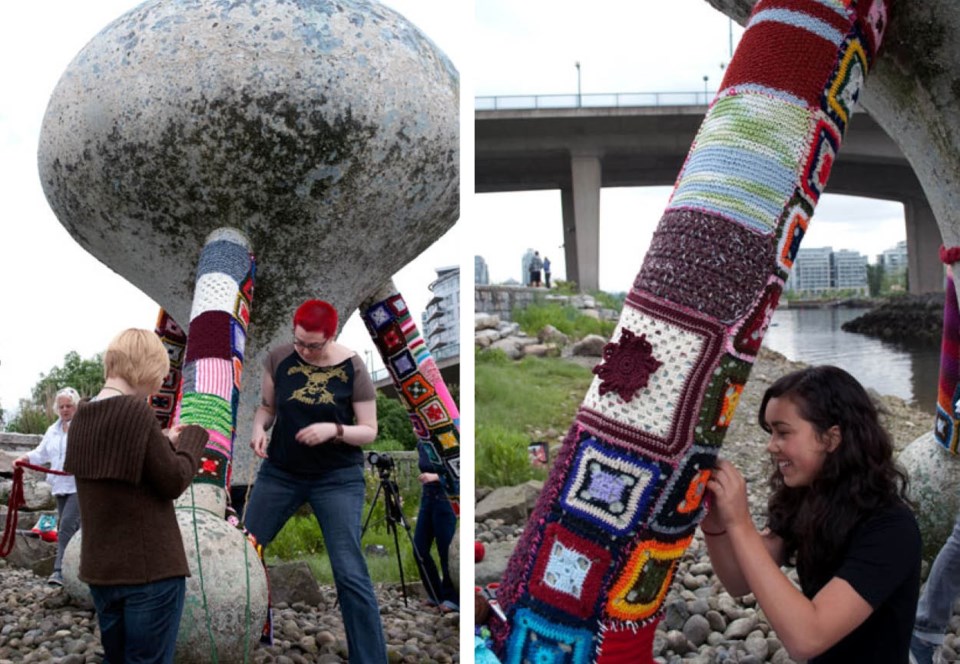Gone are the days when the term “craft” made one think of genteel ladies doing needlepoint.
The past decade has seen handmaking becoming cool. It’s also being elevated as an art form: previously considered a trivial domestic pursuit, you now see knitted, sewn and handthrown pieces on display in galleries. And the recent Women’s Marches, with their knitted, crocheted or sewn cat-eared “pussyhats”, have introduced a new word to us: craftivism.
“Craftivism is activism and craft working together,” explains Vancouver-based author and crafter Leanne Prain. “The term was developed by my friend Betsy Greer in the 2000s, but craftivism has deep roots – the suffragettes made cloth protest banners in the 1800s, women were asked to knit socks for soldiers during the first and second world wars, and Chilean women stitched small placemats that contained scenes of horror and loss during Pinochet’s dictatorship in the 1970s and ’80s.”
The Pussyhat Project was launched on American Thanksgiving in 2016 by LA-based screenwriter Krista Suh and architect Jayna Zweiman. The pair launched the project with the intention of making a visual statement at the impending Jan. 21 Women’s March, and to bring women together.
“I think the pussyhats are amazing – not only because of how they have become a popular symbol of resistance, but they show the collective power of how so many people can come together and make something that involves thousands of tiny meditations, or stitches, to represent their belief,” says Prain.
Making her pussyhat was statistician Niamh Russell’s first venture into craftivism, though she’s been crafting since she was five.
“I knitted the hat as a sort of silent protest. I do not ever put political stuff online. I don't comment on policy abroad or at home as I don't think it's an appropriate forum, and people hijack posts for their own ends. The hat was for myself to say I wanted to empower women. I was actually working the day of the march, but I wore the hat to and from work as a mini-statement for women’s [rights], and human rights in general,” she says. “Buying a hat would have been of no interest to me. Making it was part of the statement.”
Prain believes that the focus necessary for creating an object also makes its message stronger.

“Craft is something that generally needs to be done with care and intention,” she says.“I think the ability to subvert craft (aka use the stereotype that it’s a trivial pursuit) allows you to create very powerful, potent messages with craft mediums.”
So is being skilful and nimble-fingered a prerequisite for craft and craftivism? Prain says no, given that perfection isn’t the goal. All you need is to the patience to experiment and practise.
“I taught an embroidery workshop to a bunch of seniors who had dementia a few years ago – and their stuff was wildly beautiful, as there was no judgement or holding back from creating an end project. Everyone was living in the moment, and then when their caretaker ushered them out of the room, they forgot. What was important that day wasn’t what they made – but the connections we made in the act of making together.”
Get involved
Craft can make a political statement, give to people less fortunate, or even improve your math skills.
• International Yarn Bombing Day takes place on June 11. Yarn Bombing involves knitting or crochet wrapped around an object. It can be playful, political, artistic, or designed to draw attention to something overlooked. How to take part? Get out there and do it!
• Project Linus Canada,named after the blanket-toting Peanuts character, gives security blankets to children who are ill or traumatised. Find out how to contribute at projectlinuscanada.org
• There’s increasing evidence that textile arts like knitting and crochet can help people understand complex math and problem solving. In the longterm, it’s believed this can encourage girls into STEM (scientific, technical, engineering and math) careers. Learn more at brightreads.com



